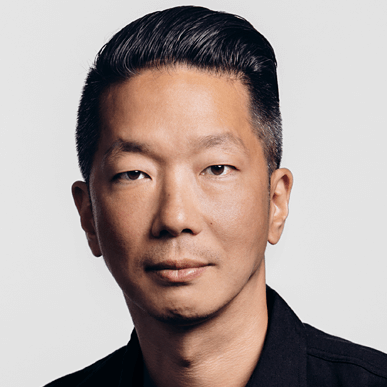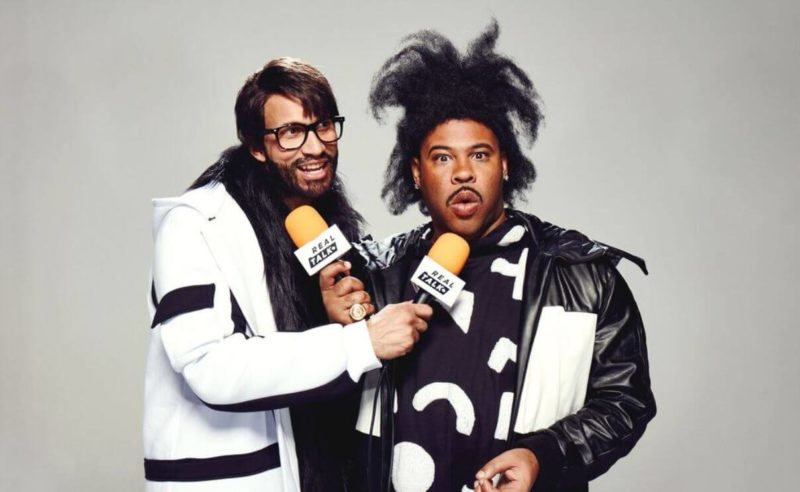A CMO’s View: A “real talk” about Super Bowl ads with Squarespace’s Chief Creative Officer
David Lee shares his brand's Super Bowl strategy, including highlights from this year's campaign with Key & Peele.
This year, veteran Super Bowl advertiser Squarespace brought the laughs, enlisting Keegan-Michael Key and Jordan Peele from Comedy Central’s “Key & Peele” sketch comedy show.
“Super Bowl 50 marked our third appearance as an advertiser in the big game, and we’ve learned something from each and every campaign we’ve done,” says David Lee, Chief Creative Officer for Squarespace.
Driving the brand’s creative direction, Lee says his role at Squarespace lives at the intersection of product, design and marketing.
“In some ways, it’s a reflection of where my career has gone — I’m a classically trained designer who started working just as the internet began to take off. I then stumbled into the world of advertising, creating global campaigns for brands while running a product development group which created a web publishing platform.”
According to Lee, his background has been hugely influential in terms of his time with Squarespace.
“We’re a creatively-led company that has made a commitment to good design. This bleeds into all groups in the company and ultimately makes my job easy — I feel lucky to be standing next to individuals who have a similar vision for our product and our marketing.”
Today, Lee shares how Squarespace’s creative direction as a brand has informed its Super Bowl campaigns.

David Lee
Chief Creative Officer @ Squarespace
Takeaways:
1. Good design is more than pretty wallpaper. Make thoughtful choices, executed beautifully.
2. Respect your audience. Treat them with something worth experiencing.
3. Be brave. Better to swing for the fences and strike out than to play if safe and blend in.
Amy Gesenhues: While Squarespace has always leveraged a uniquely funny creative direction for its Super Bowl campaigns, this year’s choice of Key and Peele felt more committed to humor. Was that the goal?
David Lee: The Super Bowl is a rare moment that lets you connect with over 100 million people. It forces us to take creative risks and try different things each year.
While we didn’t set out with a goal of being humorous this year, having Key and Peele on our radar definitely pushed the creative into new territory. Part of the beauty of who we are is that our product is truly meant for anyone in the world who wants a beautiful online presence, one they can be proud of.
With this broad of an audience in mind, we’re given a unique opportunity to tell very different stories each year.
Amy Gesenhues: How did you come to select Key and Peele?
David Lee: I think it’s important to note that while Key and Peele are best known as comedic geniuses, they are also two of the most entrepreneurial and brilliant minds we’ve ever encountered.
We try to align with people who believe in our product and our brand, as it makes the partnership more authentic. We always want to work with people who are as passionate about the project as you are.
The decision to go with Key and Peele came down to the right brand fit with the right idea. We had other people in the mix as well, but we realized that our most exciting concept could only be pulled off by this duo.
Amy Gesenhues: Beyond the #RealTalk video stream featuring Key and Peele giving a live commentary during the game, what other digital components were included in this year’s Super Bowl 50 campaign?
David Lee: This year’s campaign maintained a very tight connection to all digital channels, and our goal was to pull them all together at the right moment.
Each year, we attempt to both entertain and educate. We feel the best way to achieve the education component is by showing rather than telling, and letting audiences experience our product rather than attempting to explain it in the ad. This is why we have focused on creating extensions to our campaigns that lead people to a pure demonstration of what our product has to offer.
We also try to use these huge advertising opportunities to prototype concepts that could be useful to our customers. Squarespace.com/realtalk is a proof of concept for a live blogging template on our platform. This is not a one-off campaign that dies — rather, this is product R&D.
Amy Gesenhues: How was the live stream produced and managed? Did you guys pitch ideas to Key and Peele, or were they given free rein with their commentary?
David Lee: Key and Peele have been known to lean into sports commentary in some of their past sketches, so we felt this was an interesting territory to explore for the Super Bowl.
That said, we didn’t want to do something completely within their comfort level, so instead, we approached them about doing live improv commentary during the big game.
They were thrilled by this idea and really made it their own. We knew that there would be some legal issues to dance around with this specific campaign, but they completely embraced the legalities and made that part of the narrative right from the start.
Amy Gesenhues: Along with its official 2016 Super Bowl spots, I know Squarespace released a number of teaser ads. What are your thoughts about Super Bowl teaser ads?
David Lee: This year’s teaser ads were important because they helped to drive traffic to the Real Talk site and generate interest in the live stream. We wanted everyone to know about Key and Peele’s live game commentary, so it made sense for us to release assets well in advance of the big game.
Teasers should be used strategically, and there are times when it makes sense to not release anything in advance so you can build the mystery and anticipation.
Amy Gesenhues: Now that Squarespace has three Super Bowl appearances, what have you learned when it comes to building out the creative for such a monumental event?
David Lee: We see the Super Bowl as the ultimate stage for the brand. It’s a unique event with the ability to reach an incredibly broad and diverse audience.
It’s also one of the few opportunities in which advertisers and their advertisements are part of the entertainment itself, which creates a perfect environment in which to take bold, calculated risks.
Our goal is always to try and stand out, we would never make such a big investment to only play it safe.
Amy Gesenhues: As a Super Bowl advertiser, can you speak to how a brand’s creative direction informs the planning and development of a Super Bowl campaign?
David Lee: I don’t believe we are solely a website builder — rather, we’re giving individuals the tools to pursue their passions and turn their dreams into a reality. We’re constantly impressed by the amazing and diverse ideas people showcase with our platform, and it would be a shame not to celebrate them. This means we spend a lot of time looking at what people are creating and making sure we show the right customer example at the right moment in time.
We believe telling authentic customer stories will always be more interesting than fabricated ones. When we partner with people like Key and Peele, we make sure we’re creating a project that resonates fundamentally with them. Our campaign wasn’t “fake” in any way — we really did put on a live event and broadcast it via a website built on our platform, the same product all of our customers use every day.
To pull off something at this scale is no easy feat. There’s some strategic planning, detailed production schedules, and yes, a little bit of luck. To say we had everything planned perfectly would be a lie, but you need to feel those butterflies in your stomach to know you’re really pushing the boundaries.
We always want to be taking ourselves outside of our comfort zone and do something daring and different.
Amy Gesenhues: I would imagine your team has an overwhelming amount of analytics tied to your Super Bowl campaigns. As the person driving creative for Squarespace, how do you use analytics in relation to building out your brand’s creative direction?
David Lee: We’re definitely a very data-driven company, but we want to ensure that we’re getting the full picture when we measure the success of a campaign.
We don’t rely on a single metric or KPI — instead, we look to a whole host of factors including brand awareness, press engagement, and even effects on recruiting to determine our campaign results. This broader, more complete picture allows us to better understand how to innovate and create campaigns that cut through the noise.
Amy Gesenhues: The creative production that goes into an entire Super Bowl campaign must be exhausting, but, considering you were working with Key and Peele, there had to be a number of laughs involved. Before I end the interview, can you share the most fun you had while while working on this year’s Super Bowl campaign?
David Lee: During halftime, we incorporated teacup pigs and a football field into our Real Talk show. It was very odd and hilarious watching and listening to Key and Peele’s characters interact with these adorable animals. At one point, a pig even had a little accident on the football field.
Opinions expressed in this article are those of the guest author and not necessarily MarTech. Staff authors are listed here.
Related stories
